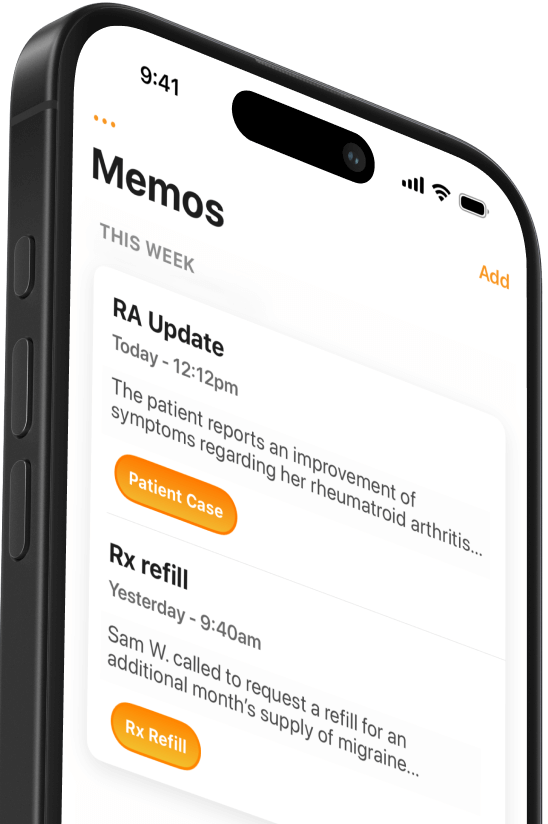Physician-Patient Communication, Five Years After COVID-19
The COVID-19 pandemic had countless lasting impacts on healthcare providers and patients.


Popular articles
Five years after the COVID-19 virus arrived in the U.S., polls show Americans have mostly moved on. According to new data from Pew Research, just one in five Americans say the coronavirus is still a major threat, and fewer than half planned to get the latest booster vaccine. Still, we continue to feel the pandemic’s impact on many aspects of American society, including physician-patient communication.
It’s easy to overlook the impact COVID-19 had on clinical interactions. From the shift toward digital messaging to a general sense of compassion fatigue, these changes are subtle but significant. Observing how patient interactions have changed can help healthcare providers continue to practice excellent communication while delivering exceptional care.
The Pandemic’s Impact on Physician-Patient Communication
The COVID-19 pandemic had countless lasting impacts on healthcare providers and patients. Here are four ways that physician-patient communication changed and some corresponding tips for clinicians.
1. A Surge in Electronic Communication
Telemedicine use surged during the pandemic, but so did EHR inbox messages. While telemedicine use tapered off in subsequent years, researchers have found that patients have kept sending a similar number of electronic messages as during the pandemic.
While convenient for patients, many providers struggle to keep up with a high volume of electronic messages. Digital patient communication is here to stay, so providers need appropriate communication strategies to avoid burning out.
What Providers Can Do:
- Set communication boundaries: Establish clear expectations for response times to avoid constant interruptions.
- Use message templates: Automate responses for common inquiries to reduce workload.
- Delegate when possible: Involve other team members in triaging electronic messages.
2. PPE Barriers to Nonverbal Communication
Masks and shields are necessary for infection control, but let’s face it: they make communication more difficult. PPE obstructs facial expressions and muffles speech, making it harder for patients and providers to interpret nonverbal cues, connect, and build trust.
If the stress of the pandemic challenged your patient communication skills, it’s a good time for a refresher on establishing rapport.
How to Establish Rapport:
- Make eye contact: Use eye expressions to convey empathy.
- Speak deliberately: Slow down and enunciate clearly.
- Verbalize emotions: Even if you’re wearing PPE, explicitly state encouragement or reassurance that you might usually convey non-verbally.
3. Compassion Fatigue in Healthcare
There’s no questioning the pandemic’s emotional toll on healthcare workers. If you were among the many physicians overwhelmed by high patient volumes during COVID, you probably found it more challenging to communicate compassionately. After all, the pandemic exacerbated physician burnout, and compassion fatigue is a diagnostic symptom of burnout.
You’re probably less stressed now, but have your physician-patient communication patterns reset? If you suspect your bedside manner may have more of an edge than it used to, try adding more compassion to your patient interactions.
Ways to Rebuild Compassionate Communication:
- Practice active listening: Show engagement by paraphrasing and validating patient concerns.
- Acknowledge emotions: Make a connection by recognizing the patient’s worries.
- Prioritize your well-being: Don’t forget that self-care is essential for sustaining compassionate interactions.
4. Communication Gaps and Deferred Care
Many patients delayed or skipped routine care at the height of the pandemic, which resulted in communication gaps and worse health outcomes.
While most patients have returned to routine visits, you may need to reach out to re-engage some patients proactively. Reestablishing physician communication is especially important for individuals with chronic conditions.
How Providers Can Help:
- Proactive outreach: Set up automated reminders or request staff follow-ups to reconnect with patients.
- Encourage routine visits: At each appointment, remind patients of when they should schedule with you next.
- Offer flexible care options: Provide telehealth or off-hours appointments when possible.
During the pandemic, providers quickly adapted to unprecedented challenges. Five years later, those adaptations continue to shape physician-patient communication–sometimes in ways we don’t immediately recognize. Acknowledging these shifts is the first step toward refining communication strategies to ensure you interact with patients as effectively as possible.
Related Articles


We Get Doctors Home on Time.
Contact us
We proudly offer enterprise-ready solutions for large clinical practices and hospitals.
Whether you’re looking for a universal dictation platform or want to improve the documentation efficiency of your workforce, we’re here to help.




